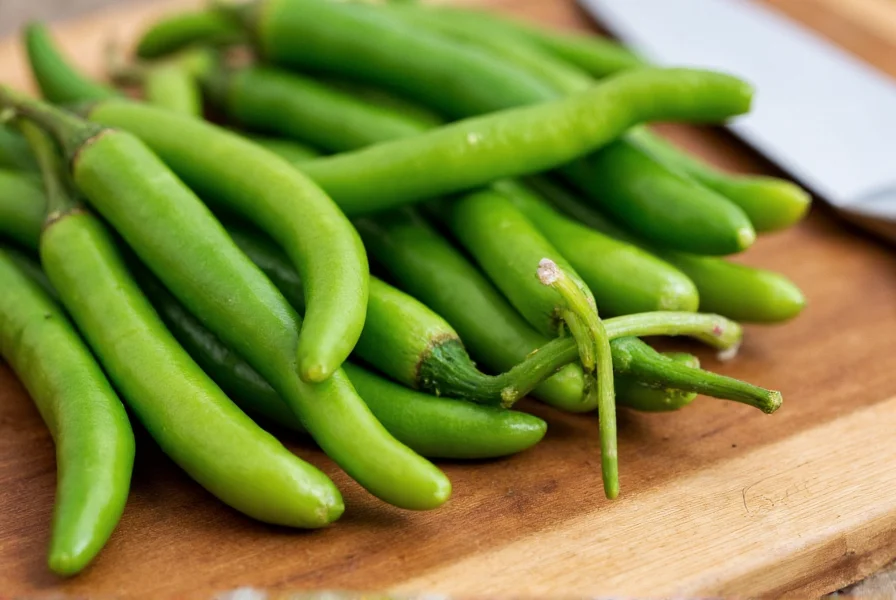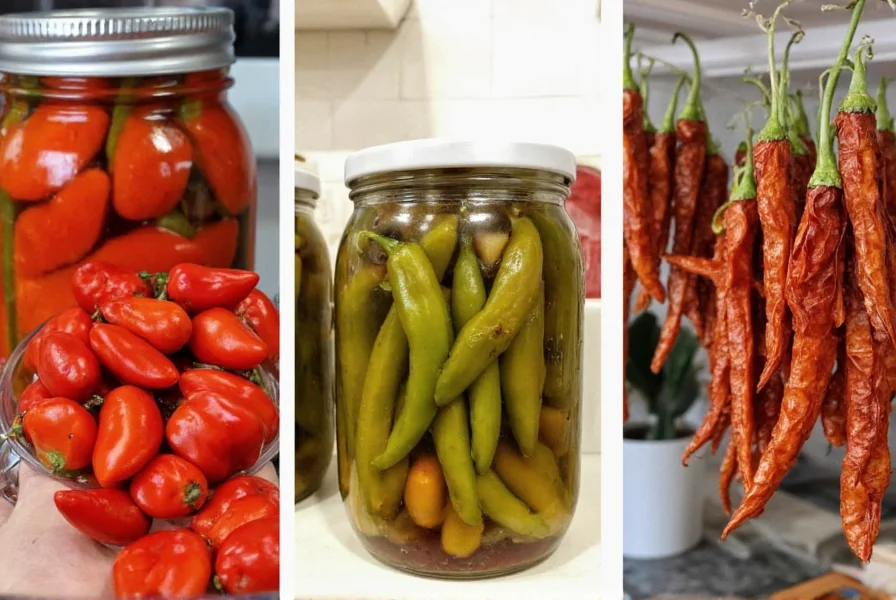When exploring what is serrano in culinary contexts, you'll discover one of Mexico's most versatile chili peppers. The name "serrano" comes from the Spanish word "sierra," meaning mountain range, reflecting its high-altitude origins in states like Puebla and Veracruz. These peppers have been cultivated for centuries by indigenous communities before gaining global popularity in the late 20th century.
Understanding Serrano Pepper Characteristics
Serrano peppers exhibit distinctive physical and flavor properties that set them apart from other chili varieties. Their smooth, glossy skin hides a potent heat that builds gradually rather than overwhelming the palate. The flavor profile combines bright, grassy notes with subtle fruitiness—especially when fully ripened to red, orange, or yellow varieties.
| Pepper Characteristic | Serrano Pepper | Jalapeño Pepper |
|---|---|---|
| Heat Level (SHU) | 10,000-23,000 | 2,500-8,000 |
| Average Length | 1-4 inches | 2-3.5 inches |
| Wall Thickness | Thin | Thick |
| Common Color | Green, red, yellow, orange | Green, red |
| Best Culinary Use | Raw applications, salsas | Stuffed, roasted dishes |
How Serrano Peppers Compare to Other Chili Varieties
Many home cooks wonder about serrano pepper vs jalapeno differences. While both belong to the Capsicum annuum species, serranos run 2-3 times hotter than jalapeños with thinner walls that don't hold up well to roasting. Compared to habaneros (100,000-350,000 SHU), serranos offer moderate heat with more vegetal flavor notes. The thinner skin makes serranos superior for fresh applications where jalapeños might add unwanted bulk.
Understanding how hot is a serrano pepper requires context. At 10,000-23,000 Scoville units, they sit between jalapeños and cayenne peppers on the heat scale. Factors like growing conditions, ripeness, and even part of the pepper affect actual heat. The seeds and white pith contain the highest concentration of capsaicin—the compound responsible for heat—so removing these reduces spiciness significantly.
Culinary Applications and Handling Tips
Chefs value serranos for their clean heat and bright flavor that enhances rather than dominates dishes. When working with these peppers, always wear gloves to prevent capsaicin transfer to sensitive areas. The thin walls make them perfect for:
- Fresh pico de gallo and salsa verde
- Infused vinegars and oils
- Garnishes for tacos and soups
- Blended into guacamole for extra kick
- Pickled for topping quesadillas
For those exploring serrano pepper uses, consider roasting them briefly to mellow the heat while preserving flavor. Unlike thicker-walled peppers, serranos require minimal cooking time—just 2-3 minutes over open flame. When substituting in recipes, remember that one serrano typically equals 2-3 jalapeños in heat intensity.

Growing Serrano Peppers at Home
Gardeners interested in serrano pepper growing guide information should know these plants thrive in warm climates with full sun exposure. Start seeds indoors 8-10 weeks before last frost, transplanting when soil temperatures exceed 60°F (15°C). Serrano plants reach 24-36 inches tall with multiple branches producing dozens of peppers per season.
Harvest begins 70-80 days after transplanting when peppers reach 1-4 inches long. Unlike some varieties, serranos maintain quality whether picked green or allowed to ripen to red, yellow, or orange. For continuous production, pick peppers regularly as the plant will generate new flowers. Container gardening works well with dwarf varieties in pots of at least 5 gallons.
Storage and Preservation Methods
Proper storage extends the shelf life of your serrano harvest. Fresh peppers last 1-2 weeks in the refrigerator's crisper drawer. For longer preservation:
- Freeze whole peppers in airtight bags for 6-8 months
- Pickle in vinegar solution for 6+ months refrigerated
- Dehydrate at 135°F (57°C) until brittle for powder creation
- Roast and freeze in oil for ready-to-use cooking ingredient
When handling preserved serranos, remember that freezing and drying concentrate capsaicin—making them potentially hotter than fresh counterparts. Always label preserved peppers clearly to avoid accidental over-spicing.

Common Questions About Serrano Peppers
Understanding what is serrano often leads to practical questions about usage and substitution. These frequently asked questions address common concerns from both novice and experienced cooks working with this versatile chili pepper.
What's the difference between serrano and jalapeño peppers?
Serrano peppers are significantly hotter than jalapeños (10,000-23,000 vs 2,500-8,000 Scoville units) with thinner walls and a brighter, more intense flavor. Their slender shape (1-4 inches long) contrasts with jalapeños' thicker, shorter form. Serranos work better raw in salsas while jalapeños withstand roasting better due to their thicker flesh.
Can I substitute serrano peppers for jalapeños in recipes?
Yes, but with caution. One serrano typically equals 2-3 jalapeños in heat intensity. For direct substitution, use half the number of serranos compared to jalapeños called for in the recipe. Remove seeds and membranes from serranos to reduce heat. When making serrano pepper substitute decisions, consider that serranos provide cleaner heat with less vegetal flavor than jalapeños.
How do I reduce the heat of serrano peppers?
Remove all seeds and white pith (placenta), which contain 80% of the capsaicin. Soak sliced peppers in salt water or milk for 15-30 minutes before use. Cooking methods like roasting or boiling can mellow heat slightly. For significant reduction, substitute with milder peppers like jalapeños or Anaheim. Remember that how hot is a serrano pepper varies by growing conditions—peppers from hotter climates often pack more punch.
Where do serrano peppers originate from?
Serrano peppers originated in Mexico's mountainous regions (sierras), particularly in the states of Puebla and Hidalgo. The name "serrano" directly references these high-altitude growing areas. Indigenous communities cultivated them for centuries before they gained international popularity. Unlike many commercial peppers, traditional serrano varieties remain primarily associated with Mexican cuisine rather than global hybridization.
Are red serrano peppers hotter than green ones?
Generally, red serrano peppers are slightly hotter than green ones as they've had more time to develop capsaicin during ripening. However, the difference is minimal compared to other chili varieties. The primary distinction is flavor—red serranos develop sweeter, fruitier notes while green ones maintain brighter, grassier characteristics. Both colors measure within the 10,000-23,000 Scoville range, making color choice more about flavor profile than significant heat variation.










 浙公网安备
33010002000092号
浙公网安备
33010002000092号 浙B2-20120091-4
浙B2-20120091-4